IRISH LICHENS
Lichens are dual organisms; a fungus and one or more algae in a stable, mutually beneficial (symbiotic) partnership. The fungus provides structural form and protects the algae from extremes of light and temperature. Algae are capable of photosynthesis and some of the sugars produced provide the fungus with energy for growth and reproduction.
Some lichens can live for many hundreds of years and being sensitive to pollution levels they are important enviromental indicators.
Lichen identification can be very confusing to begin with as there are many similar species but the first step is recognising the different growth forms and the reproductive features; apothecia (fruiting bodies), isidia (tiny outgrowths) or soredia (often sperical and powdery). These and the habitat are important details that aid identification.
(Glossary)
Photographs are very useful but often can't provide an accurate identification as this can require a hand lens to see vital details, simple chemical tests, examination of the spores using a compound microscope or even Thin Layer Chromatography.
N.B. Many names have been changed recently. Where two names are given on thumbnails and in species descriptions the name in brackets is the older name, used in Dobson, Lichens of Britain and Ireland 2 and in the laminated guides from the NHBS bookstore. If you are uncertain what the current name of a species is it can be checked using the
BLS Lichen Taxon Dictionary.
A third edition of the Lichens of Great Britain and Ireland is underway and as each section is completed it is available as a free to download PDF from the British Lichen Society website:
Revisions of British and Irish Lichens (LGBI 3)
Please use the menu bar or the links below for A-Z Index, lichens by growth form, habitat or view the Sitemap.
Crustose, grapid, placodioid
Squamulose
Foliose
Cladonia
Fruticose, Filamentous





GROWTH TYPES:

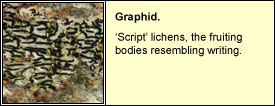
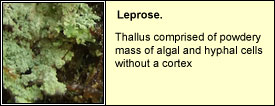
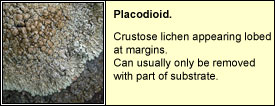
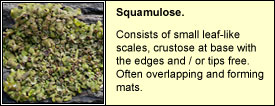

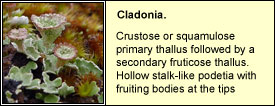
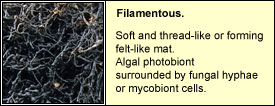
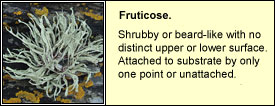
FRUITING BODIES:

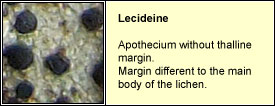
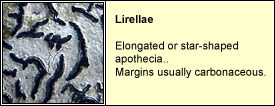
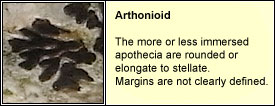
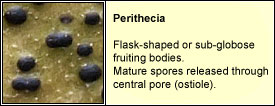
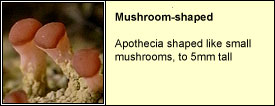
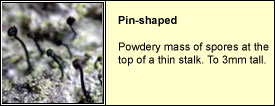
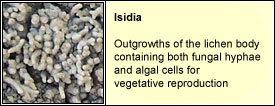
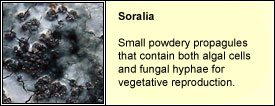
The Burren (limestone)
Acidic uplands
Coastal
Urban, churchyard
Trees, wood
'Western oceanic'
For photographs of Fungi and
algae, seaweed, slime moulds and plant galls please follow the links.
Photographs and details of Wildflowers, Grasses, Sedges and Rushes in Ireland can be found at
www.irishwildflowers.ie
Please contact me with queries or if you find mistakes